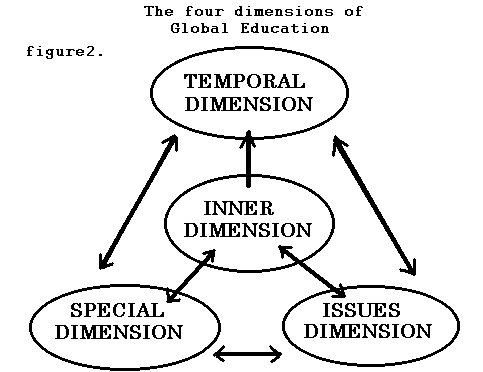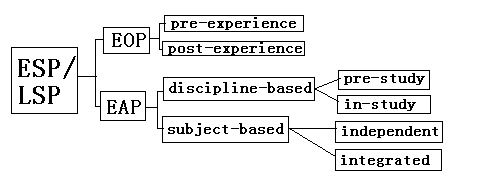
Introuction Of Global Education to English Teaching
By Mitsumasa Matsumoto(- Brief edition -)
@
Preface
Dear Teacher, I am a survivor of a concentration camp. My eyes saw what no man should witness: Gas Chambers built by learned engineers. Children poisoned by educated physicians. Infants killed by trained nurses. Women and babies shot and burned by high school and college graduates. So I am suspicious of education. My request is: Help your students become human. Your efforts must never produce learned monsters, Skilled psychopaths, educated Eichmanns. Reading, writing, arithmetic are important only if they serve to make our children more human. |
Whatever subject we teachers may teach to students, the backbone of the subject should be gGlobalHumane Eeducationh, I insist.
I hope toward the 21st century eComprehensive school hoursGeneral united subjectf will be prevailed where gGlobal Eeducationh should be taught.
This thesis aims at the introduction of gGlobal Eeducationh to English, and telling the easiest way to do that. In other words I want to change gEnglish as subjecth into gEnglish for lifeh.
The essence of this thesis

This eWeb modelf thinking is indispensable for eEnglish for lifef.
Today the shrinking world has been promoted, then everything has been correlated with each other. English is not the exception, it must be correlated between subjects. Moreover different English abilities are also correlated. Itfs summarized in figure 1-gWeb modelh.
gThe transformation of the world from a collection to a system of lands and peoples can be represented symbolically as a transformation from a ebilliard ballf to a ewebf global model. On the billiard table, only the outer surface of the balls (states) are in contact. There is surface interaction, even occasional collision, but the structure / relationships within each ball (state) are not significantly affected. In the modern world, the ebilliard ballf model has given way to a far more complex and tangled web of global relationships so that states are closely interwoven.h
(Graham Pike & David Selby, 1988 : p.5)
gToday issues are so interconnected that two states may be allies in one issue area and antagonists in another, trading concessions in the latter for continued support in the former. Today situations are so complex that bureaucrats in several countries may form a coalition to oppose convergence among their respective chiefs of state.h
(James Rosenau, 1983 : p.30)
Thus our world toward the 21st century is so interconnected, complex and tangled that we have to change our way of thinking into a esystemicf, eholisticf and correlated one like the ewebf global model.
Talking of English competence, all competence is correlated with each other. Even if a eCritical periodf actually exists, what we English teachers aim, should be unchanged; we should aim at etotal English competencef eventually.
Global Education is divided into gfour dimensionsh and gfive conceptsh(Chapter 6) in terms of the way of thinking, four dimensions; special dimension, issues dimension, temporal dimension, and inner dimension. (See figure 2.)
Today the world has systematically been interconnected, finterdependentf and eholisticf. This concept is just a eWeb modelf . And itfs the core of Global Education.
It is the gAreas of Global Educationh, such as, eDevelopment Educationf, eEnvironmental Educationf, eHuman Rights Educationf, ePeace Educationf, eHealth Eeducationf, eEducation for Race and Gender Equityf, and eIntercultural educationf. Those kinds of Issues have to be presented by the authentic materials or media. I think the textbook topics should also have such kinds of Issues.
Now most of the aims of education areis focused on epresent matterf or epast matterf. But toward the 21st century we have to think much of the efuturef. It means a epreferredf , ePossiblef and eProbablef one. The more chaotic the world will be the more we have to create or think about our future, I am sure.
This dimension is the most important concept for the students to learn eglobalizationf. Because today at school we teachers give them only a knowledge based cross culture lesson. Of course it lacks their eactionf and eexperiencef. (See chapter 5)

@
Topic centered teaching method as eEnglish for lifef
A etTopic centered teaching methodf is composed of two categories; English needs and Task.
English needs lead to eEnglish for lifef and refers to studentsf motivation for English learning, the textbook topics, and Global Education.
And eTaskf is almost equal to eActionf in Global Education, it refers to the classroom learning styles.
Classroom learning style: ( See chapter 5,6 )
CLIMATE --- ENQUIRY--- PRINCIPLES--- ACTION
Long (1985:89) defined etaskf as g the hundred and one things people do in everyday life, at work, at play, and in betweenh.
Task itself is very complicated, but generally it is defined into two categories; ereal-world taskf and epedagogical taskf. The ereal world taskf requires eproductf as etarget taskf, but the latter one doesnft. And ereal world taskf can make learners more active and motivated.
( Nishimura, 1994: pp.11-13 )
Ifve fully recognized eGlobal Educationf has to be introduced as not only a subject but other subjects or even the school curriculum, community levelfs education. And Ifve also recognized it results from eLife Skill Educationf for developing countries. Selby( 1997 ) said recently the situation has been changing into eLife Skill Educationf for developed countries.
eLife Skill Educationf itself has to be taught as community levelfs education.
But when I introduce Global Education to English, I mean only ereal world taskf. When the learners can concentrate on ereal world taskf, English will function as a ecommunicative toolf. Furthermore when ereal world taskf is related to eAreas of Global Educationf we can expect learners to produce and create the bright future. The productions through ereal world taskf have to be significant in terms of Global Education, and they will work and continue into the next stage significant action.
To do so we need systemic topics which are introduced to learners as English lesson.

Topic centered teaching method is summarized in figure3.
English needs analysis toward the 21st century
First of all, we need to know the changing needs which result from learners and other factors with the times. I wonder if todayfs EFL situation in Japan really has English needs for functional, practical use for the learners.W.Rivers( 1968 ) said gThe English for specific purpose movement likewise begins not from a structural theory of language but from a functional account of learner needs (Robinson 1980)
Strevens attributes the recent expansion of LSP(Language specific purpose)courses to the "global trend towards elearner-centered educationf" , with its emphasis on learners needs and interest. It may also be seen as a product of the rapid technological and societal changes and the increased mobility of populations which are features of our age....... EST(English for science and technology) has come to the fore because English is considered the major international language in these areas......nearly two-thirds of engineering literature appeared in English .With the development of LOP(Language for occupational purposes),teachers have gone beyond the traditional reading approach of LST/EST........ EEP(English for educational purposes),for which Robinson proposes EAP(English for Academic purposes),prepares students to study other subjects in English as an Auxiliary Language(EAL), or to undertake specialized courses in English-speaking universities. EAP goes beyond language study to training in study skills: listening to lectures and taking notes on these and on reading in the field ;writing reports and papers; answering questions on specialized material orally............. EOP applies less to the requirements of highly educated professionals and more to the everyday needs of working people. This area, as LOP, is important for languages other than English, since our epoch is witnessing a substantial migration of workers from less industrialized countries to areas of high production. These workers need to communicate in work situations with foremen and fellow workers................the need for LSP in second language and bilingual situations, even at the ELL stage, needs to be stressed, Children must be prepared, not only for everyday communication in the language, but also for integration into an ongoing school program in that language. This means acquaintance with the concepts and terminology their future classmates will have acquired in their earlier classes, as well as facility in performing arithmetic operations in the second language, and familiarity with mathematical formulas, and grammatical categories.,...........
